YouTube For Brands: Comprehensive Guidelines to Drive Awareness and Grow Your Brand's Channel
YouTube is a vastly different platform than it was when it was launched in 2005.
Once a simple website for hosting videos, it is now a digital media juggernaut with 2 billion users and nearly 1 billion hours of video watched across the world every single day. It’s also one of the most powerful, yet untapped tools available to marketers.
So why aren’t companies taking advantage of YouTube for brands?
For some, it’s a matter of budget and resources. But in most cases, brand marketers either haven’t taken it seriously or simply don’t know where to start when it comes to YouTube channel optimization and content programs.
YouTube marketing is not rocket science, but it does rely on a solid strategy to be effective. It’s not about posting random videos whenever you happen to have them handy, nor is it about hammering people with ads while they’re watching other things. While advertising does play a part in an overall healthy media mix, the most successful brands on YouTube approach it with a content marketer’s eye.
Consumer preferences have been shifting toward content experiences over advertising for some time now, especially when it comes to video. According to Think With Google, 80% of consumers say they switch between online search and video when researching products, and 50% say online video has helped them make a final purchase decision.
This has become even more prevalent in light of the COVID-19 pandemic, which has forced a lot of our day-to-day activities online, including shopping and business decision-making. This shift was already taking place, but the crisis has only accelerated it — and it’s very likely that these changes will be permanent.
Thus, for many brands onYouTube, the platform presents a great opportunity to meet consumers where they’re already spending a lot of time and engage them with meaningful content that goes beyond generic spray-and-pray advertising.
By creating great video content that serves not just as a vehicle for brand awareness but as a way to make a more personal connection with consumers, your brand can both increase sales over time and foster long-term loyalty that goes beyond a one-time transaction.
In this YouTube for Brand guide, we’ll show you how to do just that.
How Are Consumers Using YouTube
When considering how best to start your brand channel or improve your existing one, you need to start where all good marketing strategies start: the consumer.
How do they use YouTube? What kind of content do they watch?
What are their questions? Their pain points?
Many marketers shy away from leveraging YouTube for brands because they think all people want to watch are cat videos. But the platform and its user base have evolved by leaps and bounds over the last 15 years — people now turn to it for much more than just mindless entertainment.
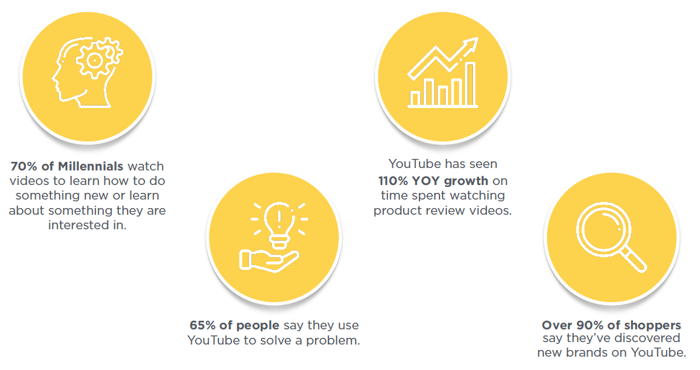
In many ways, YouTube has also become an alternative to broadcast TV. With so many people cutting the cord and turning to streaming media for both entertainment and learning, YouTube has become a major part of people’s day-to-day lives.
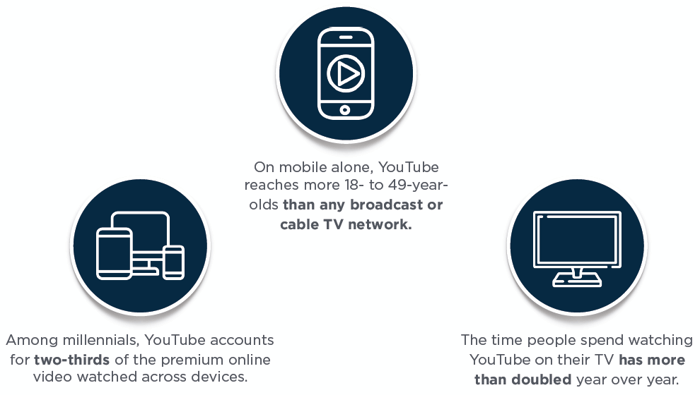
And it makes sense, doesn’t it? Why flip through channels at the mercy of a predetermined programming schedule when you can zero in on exactly the type of content you want, on whatever device you prefer, whenever you want?
So, when determining what type of content you need to create for your brand’s YouTube channel, always start by asking yourself: What does our audience want, and how can we give it to them in a unique and useful way?
Now, let’s dive into how to set up your channel and start planning your strategy.
Building Your YouTube Channel
Set-Up & Optimization
Whether you’re creating your YouTube channel anew or looking to blow the dust off of a channel you created a long time ago, the first step is to optimize the channel itself.
Remember, YouTube functions as a search engine for many people, so you need to approach your channel much like you would a website. You want it to be discoverable, and it needs to look credible. As in most cases, this organic approach to brands on YouTube is a good way to increase reach and brand awareness without dropping a ton of money on advertising.
Let’s break down the different components of a YouTube channel, then dig into the various features and guidelines that the platform offers for both optimization and user experience.
Channel Features
Channel Art
Much like a website, every YouTube channel has a “home” page. The banner at the top of this page, also known as your channel art, lets you set the tone for your entire channel.

This banner carries over across all devices, so you’ll want to size it correctly and view it on desktop, mobile, and TV to make sure it looks right.
- Recommended image size: 2560 x 1440 px
- Minimum image size: 2048 x 1152 px
- Maximum file size: 4MB
You can use this space to convey different types of branded video content and messaging, depending on how you plan to use your channel. For example, brands that publish content on a set schedule can highlight when users can expect new videos to drop:

Alternately, you can rotate new channel art on a regular basis to feature different products/launches or highlight your current marketing campaigns:

You can also feature up to 5 links in the banner section of your channel. This is a great spot to link to your other social media channels, your website, and any other important pages.
Featured Video
The next section available for customization on your channel is the featured video. While it is completely optional, it’s a good idea to not only utilize this space, but keep updating it regularly to show that your channel is active.
Since it appears front and center on your channel homepage and will autoplay, a featured video is a good way to set the tone for your channel and give users a taste of what to expect. Many brands feature an explainer video or some other kind of content to introduce themselves:
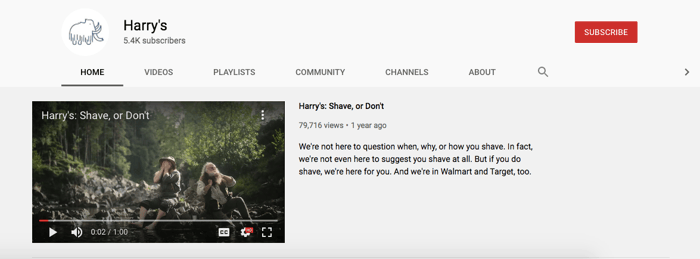
Of course, if you are regularly updating your channel on YouTube, you can also feature your latest video or spotlight a timely piece of content that speaks to something that’s already on your audience’s minds (especially during these turbulent times):
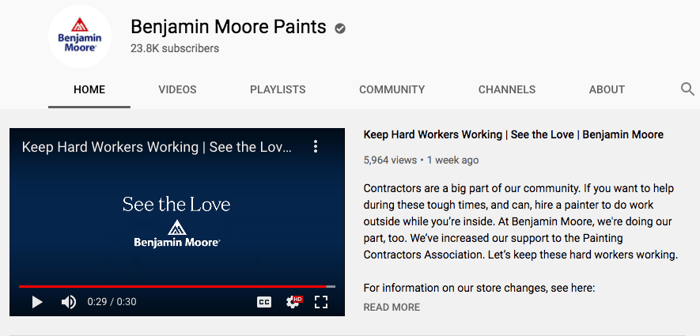
Playlists
The Playlist feature allows you to organize videos into neat categories for easy navigation. For brands who plan on publishing frequent but varied videos, this can be a huge time-saver for users who want to zero in on the specific type of content they’re seeking in that moment.
Playlists live in their own tab, but can also be featured on the Home page. This feature is especially useful if you publish serialized content, as it allows you to create a kind of library for all of your series.
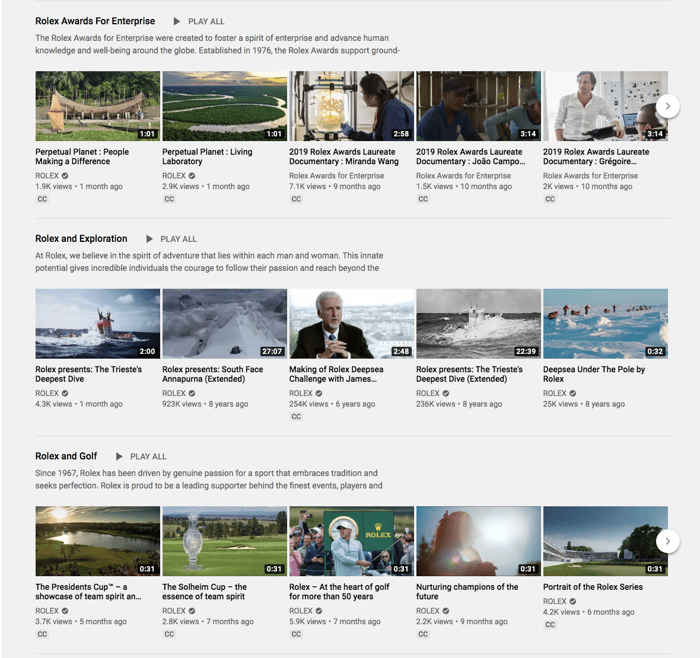
This type of organization can also help encourage binge-watching, which increases the overall engagement on your channel. Each playlist features a “Play All” option that will queue up all of the videos included.
So, for example, if you create a playlist featuring all of your how-to videos related to a specific line of products, a user interested in those products can watch not just one, but all related videos and come away with a lot of information to inform their purchase:
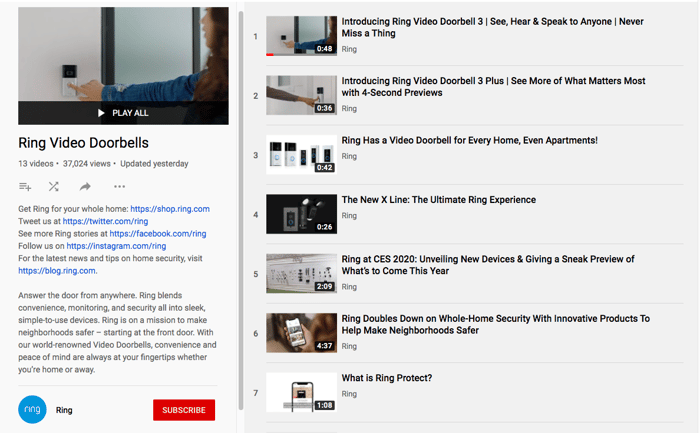
Video Features
Thumbnails
There are a lot of videos on YouTube — 1.3 billion to be exact. Needless to say, the competition is fierce, so you want your videos to stand out in search and among other suggested videos. That’s where eye-catching thumbnails come in handy.
This is especially true considering the fact that for most (if not all) searches, you will be competing against videos published by influencers and other content creators, as well as ads:
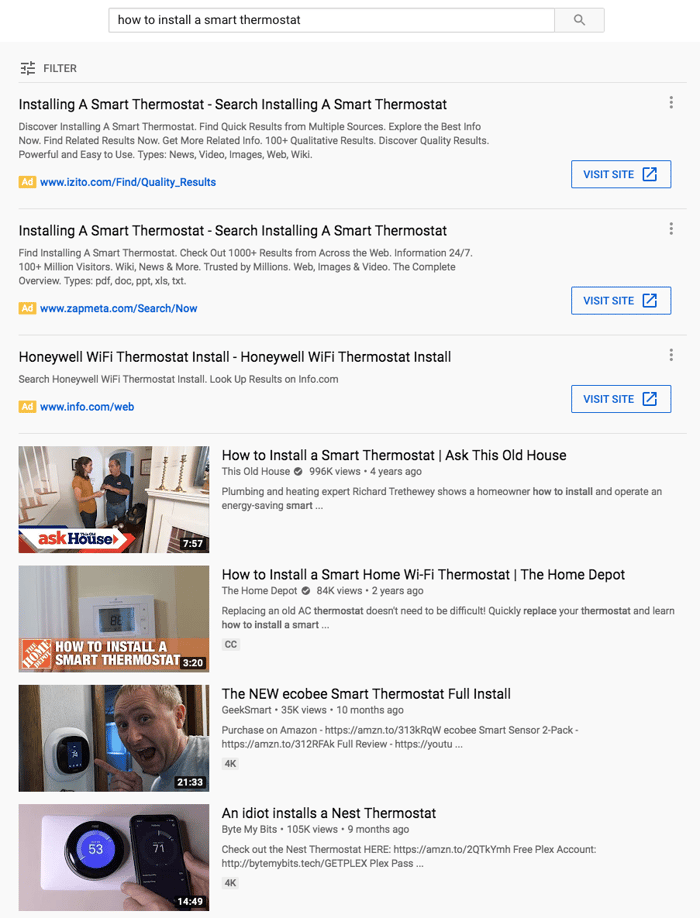
Customizing thumbnails not only helps your videos stand out, but it can also help set expectations for users and lend a consistent, branded look to your overall channel.
A great example of this is Home Depot’s channel, which features brightly colored thumbnails with succinct titles and their unmistakable logo. As you can see in the aforementioned search results, it’s hard to miss one of their videos. And when viewed together, they really nail the retailer’s branding and give their channel a well-designed, consistent look and feel:
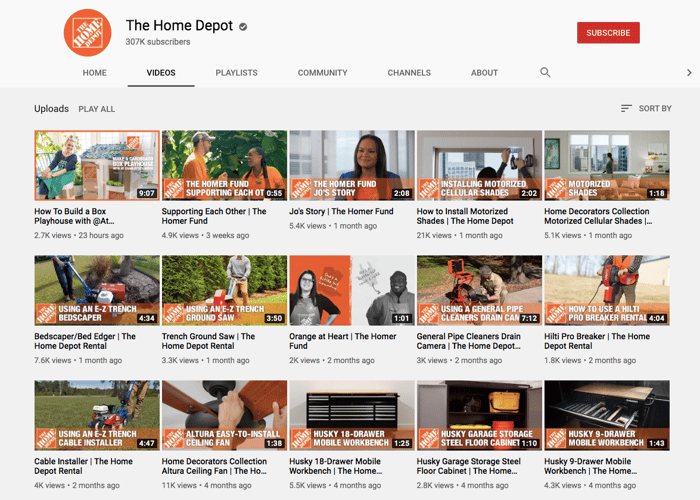
Cards & End Screens
Cards are links that you can embed throughout your video to send users out to a specific external page, such as your website. This is particularly useful on videos about a particular product or service, as you can link directly to a page for purchase.
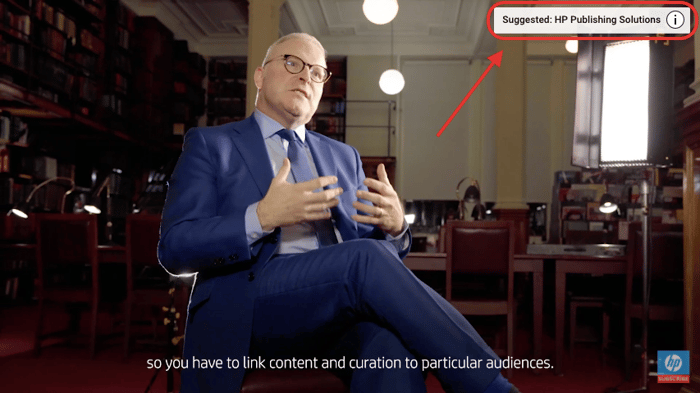
End cards are similar links that you can add to the end of your videos, typically within the last 5 to 20 seconds. These offer a little more flexibility, as you can link directly to one or more videos on your channel and add a direct CTA to subscribe to your channel:
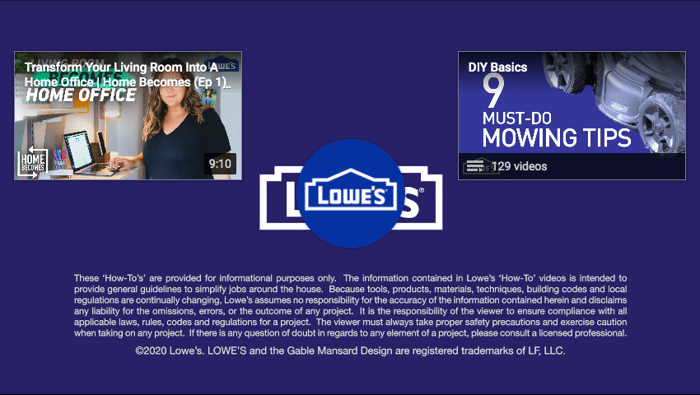
Some brands get creative with this, having their on-screen talent call out the end cards to encourage users to click on them (and, in the case of Dollar Shave Club, awkwardly and hilariously sit around while waiting for them to do so):
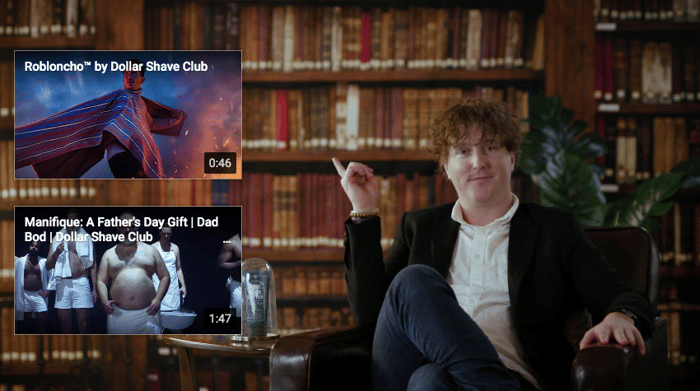
You can take it a step further by adding graphics to the end of your videos that can then be overlaid with end cards:
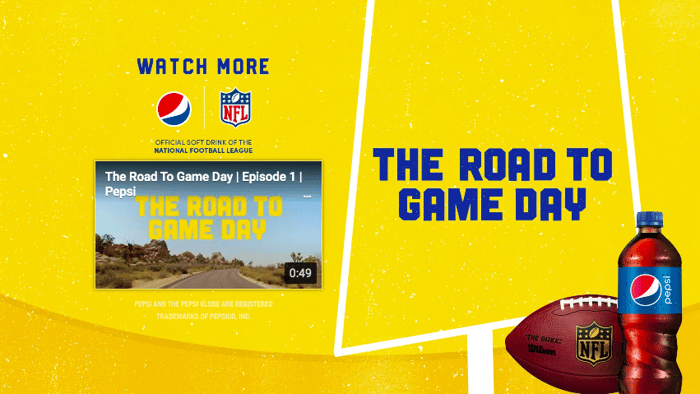
With end cards, you can call attention to your most recent video (which will always update automatically), related videos within a series, or an entire playlist for users to peruse.
Watermarks
Branding is everything when it comes to your YouTube videos. While many users will view them in the context of your channel, there are many other places they might appear, so it’s important to include your branding whenever possible.
One way to do this is by adding a watermark, which appears in the lower right-hand corner of your videos and displays a “subscribe” CTA when a user hovers over it.
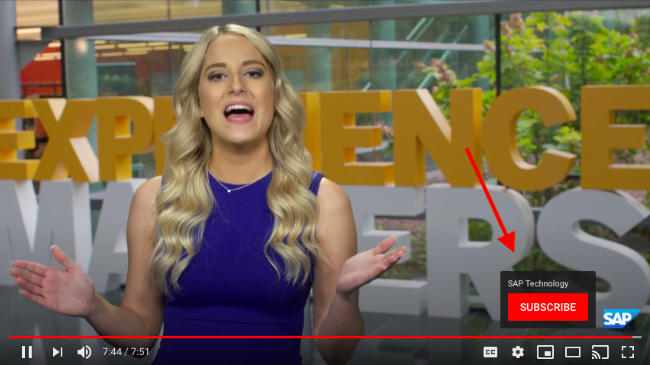
Your channel’s watermark is a global setting, which means you only have to set it up once. It will automatically appear on all of the videos within your channel.
Your watermark image must be square, a minimum size of 150x150 px, and no larger than 1MB. Transparent PNGs work best here, and YouTube recommends using only one or two colors.
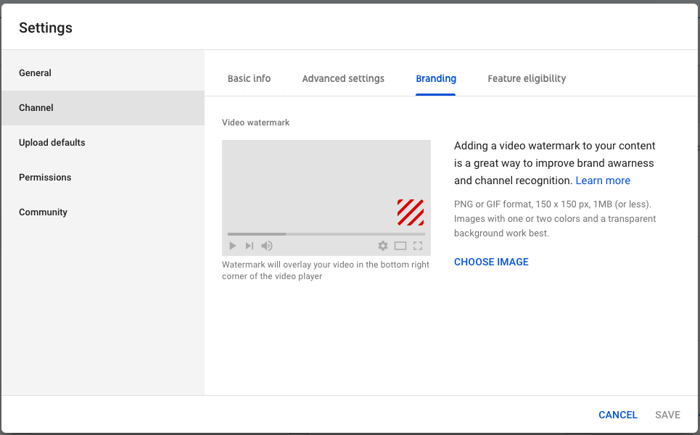
Meta Data
Just like Google, YouTube employs an algorithm that aims to answer user queries with the freshest, most relevant content possible. There are a few different things that factor into these rankings, including the meta data of each video.
The closer to a user’s query the title, description, and/or tags are, the higher the video will rank in search. Keywords play a big part here, just as they do in the SEO of your website.
Title
In addition to including focus keywords, your video titles should be as clear as possible to let users know exactly what to expect. Don’t just title your videos with the name of your product or service — if a video is a product demo or a how-to guide, say so in the title.
You can also include your brand name in your titles. And if you have serialized content, it’s not a bad idea to include the name of the series in the title of each video:
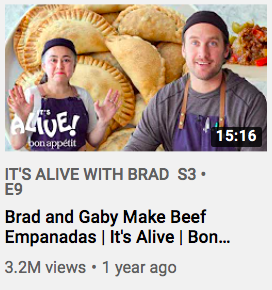
Description
Similar to the meta descriptions on your website, the descriptions of your YouTube videos will appear in search results. This is a good place to provide a short summary of what your video is about, and to work in one or more keywords.

On the video page itself, the description gives you space to provide more details about both the video and your brand overall. Bear in mind that the description will be truncated under a “See More” link after a few lines, so you’ll want to keep the most important information at the top.
Below the cut, you can include additional information about your brand, an expanded description of the product/service being featured, links to your other digital channels, or even additional CTAs to subscribe to the channel or contact you:
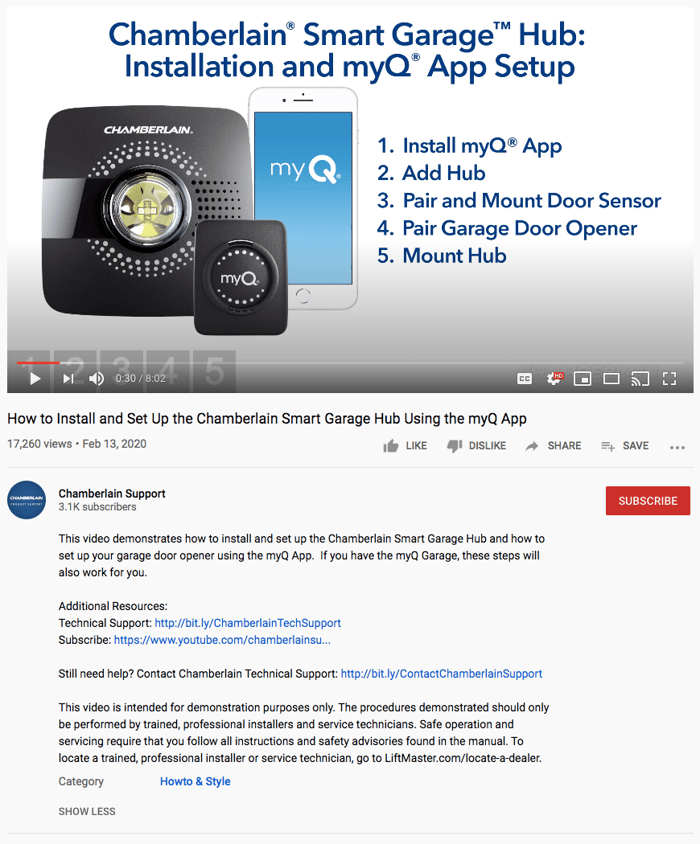
Tags
The last feature you can use to optimize your YouTube videos for search is tags. When you upload a new video, you will have the option to set several tags up to 500 characters.
The best strategy here is to focus on the most relevant keywords for that specific video. While it may be tempting to dump in a ton of other tags, tagging on YouTube is meant to help the algorithm make sense of individual videos so it knows where to surface them. In this regard, you’re better off with a small number of very specific keywords.

Once your channel is optimized and you have a good idea of how you might want to approach its overall look, feel, and organization, it’s time for the good stuff — content creation.
Fueling Your YouTube Channel
Content Planning & Creation
A slick-looking and optimized YouTube channel won’t do your brand any good if it’s not also filled with great content. When considering what content your brand should be producing, it’s important to remember that it’s not always about what you want to say.
Yes, your overall business and marketing goals will play a big part in building your strategy, but you need to view things from the perspective of your audience.
What content do they want and need?
Here are some factors to consider when laying out your YouTube content strategy.
Mapping Your Strategy
Know Your Audience
Look to search trends within your industry, as well as the typical customer journey for your unique audience in order to determine what they may be looking for and when. Base the types of content you produce around servicing those needs.
It’s also important to understand your audience demographics to determine the overall style and tone. Your YouTube channel is just one part of your overall digital presence, so it needs to be consistent with the expectations of your audience.
Know Your Goals
Whether you’re looking to simply boost brand awareness or have specific sales KPIs, your goals should serve as a frame of reference when determining the overall purpose of your videos, as well as the calls to action and how you structure your YouTube ad campaigns down the line.
For example, if your main goal for marketing on YouTube is to boost awareness of your brand, you may choose to focus more on emotional or entertaining videos that will draw attention and potentially go viral. On the flip side, if your main goal is to drive traffic to your site and increase sales, then you may choose to focus on more product-centric content with CTAs that drive people directly to your product pages.
Know Your Brand
From production quality and aesthetic to your messaging and tone, brand consistency is key. Let your existing brand guidelines serve as a frame of reference for your videos — this takes a lot of guesswork out of planning and production, and ensures that your YouTube channel fits in seamlessly with your other owned media.
Know Your Industry
Depending on your industry, there may already be competitors leveraging YouTube for their video marketing. While planning your own content strategy, it’s a good idea to see what others in your space are already doing — and not doing — so you can determine trends, gaps, and opportunities.
It’s also important to understand the role influencers play in your industry. Some industries have very prominent YouTube content creators with massive followings. You may end up competing with them in search, but you could also partner with them if sponsorships and influencer marketing are part of your overall marketing strategy.
Building Your Calendar
So, how do you feed the YouTube beast?
For many brands, video marketing is a perpetual sore point, whether from a budget or resource perspective. It’s why a lot of brand YouTube channels end up being an infrequently updated dumping ground for TV spots and other one-off videos — they start off with good intentions, but ultimately fall victim to high expectations and perfectionism.
The truth is, you don’t need to be producing Scorsese-level works of art every single week for YouTube to be effective for your brand. What you do need is consistency and utility. As long as you have a cohesive strategy and your videos are useful, you will find your audience.
One way that YouTube recommends to achieve this is by following a hygiene-hub-hero content strategy.
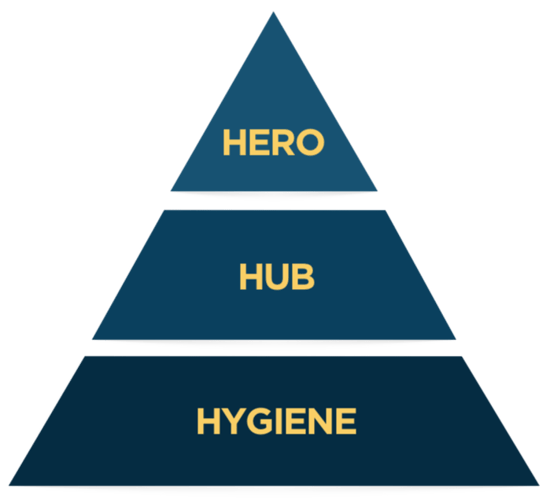
With this model, you can break up your videos by function and map out how frequently you need to be producing each kind of video based on both their purpose and impact.
Hygiene Content
This is a type of “always-on” content that focuses on what people are searching for. It’s how you “pull” users onto your channel with videos that answer their queries. These videos should be published frequently, acting as the foundation of your content calendar.
Frequency: weekly or bi-weekly
- How-to videos
- Product demos
- Tips and hacks
- Unboxing videos
Hub Content
Once users are subscribed to your channel, hub content can be used to “push” more info about your brand and keep educating them on what you have to offer. While less frequent than hygiene content, you should publish hub content fairly regularly to stay top-of-mind.
Frequency: monthly
- Behind-the-scenes / interviews
- Serialized content
- Product editorials
- Success stories
- Influencer collabs
Hero Content
This is big, splashy content to highlight tentpole events and other big announcements, which are typically less frequent but have a higher impact.
Frequency: quarterly
- Product launches
- Seasonal campaigns
- Brand films
- Event videos
The hub-hygiene-hero framework allows you to plan not only the frequency of your videos, but the subject matter based on both user interests and key brand messaging. It enables your team to come up with ideas on an ongoing basis — lead by your audience’s needs and what’s going on brand-side — as well as build out your monthly or yearly content calendar.
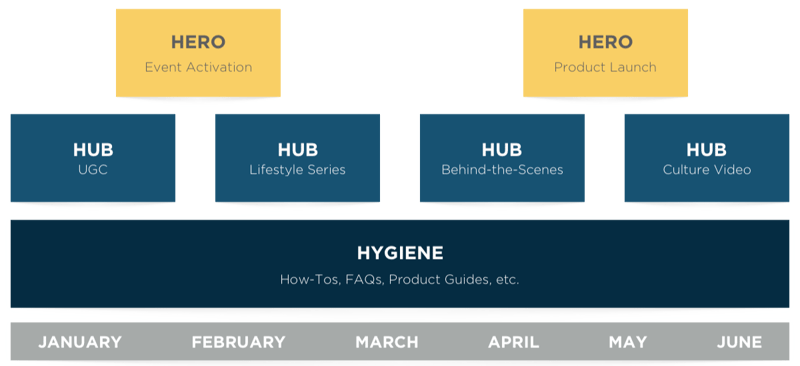
An added benefit of structuring your YouTube content strategy this way is that you can utilize these videos across your other channels based on their diverse purposes, as well as in your advertising campaigns. This can help build a cohesive digital presence and help you get more bang for your buck on your video production costs.
Filling Your Funnel
With all of this in mind, you may be asking yourself: How the heck am I going to actually MAKE all of these videos? Not every brand has a full marketing team, after all, much less full video production resources available at the drop of a hat.
As we mentioned before, you don’t need to produce million-dollar brand films to find success on YouTube. While a high production value does definitely make a great first impression, the value of your videos lies in their content — and there are plenty of ways to make them happen.
- Do It Yourself — If you do have the budget for an in-house video team, creating a lot of videos frequently should be no problem once you have a solid content calendar laid out. Alternatively, if your marketing team is small (or a one-person show), you could go the scrappy route and produce videos using the camera on your computer or phone. This works well for educational content such as webinars or technical software walkthroughs, as well as hero-type content such as live event coverage.
- User-Generated Content — Depending on your industry and the types of products or services you have to offer, there’s a chance you already have a decent fan base out there that would be willing to contribute content to your channel. Whether it’s submitting clips to be included in a compilation video or full-length reviews and unboxings, UGC can not only help you keep your channel active, but lend an air of credibility and trust to your brand overall, as most consumers are more likely to trust another person’s word over typical marketing messaging.
- Hired Guns — If you have the budget, you always have the option of hiring a production company or a creative agency to help you plan and produce your YouTube content. The benefit here is that you will be able to diversify your videos and expand beyond live-action or on-the-fly videos into the realm of animation and CGI. This also opens the door to more artistic ventures such as brand films, since a third-party partner can bring a much more diverse range of technical and creative expertise to the table.
Growing Your YouTube Channel
Promotion & Engagement
Once your channel is optimized and you are regularly producing content, it’s time to get your videos out there. Remember, simply having a YouTube channel does not guarantee views or subscribers right out the gate.
So, how do you get people to actually find and watch your videos, and how do you keep them coming back for more?
Promoting Your Channel
The best place to start is on other digital channels that you own. While YouTube is incredibly powerful on a native level, there are plenty of ways that you can weave your videos across your entire digital presence to make people aware of your channel.
- Promote on your website — Embed your YouTube videos across your site whenever possible, whether it’s showcasing an explainer video on your homepage, including demo videos on individual product pages, or even building an entire learning library out of the instructional videos you’ve made. And of course, you should always include a link to your YouTube channel along with links to your other social media channels.
- Promote in your email signature — If you and your team send out a lot of emails, your signature is prime real estate for highlighting your marketing campaigns and other activities. Along with other relevant links to your website and social channels, you can highlight your YouTube channel in your email signature with a CTA encouraging the recipient to subscribe.
- Loop into your social strategy — While native video tends to perform better on social media versus posting a YouTube video link, that doesn’t mean you can’t leverage the audience you’ve already built on these platforms to boost your subscribers on YouTube. In addition to pointing followers directly to your channel, you can announce every time you post a new YouTube video as a part of your regular social media posting schedule.
- Engage with other brand channels and creators — We can’t stress enough how community-based YouTube is, even among content creators and brands. It’s not uncommon to see folks feature like-minded channels on their Channels tab. And co-branded content tends to yield a lot of engagement because they merge two existing audiences, so you may consider working collaborations into your overall strategy.
Posting Frequently & Consistently
Actively updating and managing your channel can increase its “authority” in the eyes of the YouTube algorithm. Similar to Google, YouTube tends to favor “fresh” content when choosing which videos to show in search or suggest to users, so the more often you post videos, the better your channel will perform organically.
An active brand channel is also more appealing to users themselves, as most people want to know that the information they’re getting is up-to-date. And of course, the more often users watch your videos, the higher YouTube will surface them.
Quality of content matters a lot here, too, much like it does with Google search and on-page SEO. Remember, it’s not about posting videos of little to no substance every single day just to check off the boxes. Rather, it’s about showing that you are a reliable source of information that is relevant to what users are actually interested in watching.
Engaging the Community
Another part of actively managing your channel and signaling your authority to YouTube is engaging with your subscribers and those who interact with your videos.
If you allow comments on your videos, monitor them carefully and respond when appropriate. For videos that are focused on products or services, it’s not uncommon for users to comment with questions or even complaints, so there’s a good opportunity to flex your customer service skills within the comments.
YouTube also offers a Community tab on channels with over 1,000 subscribers that acts like a type of short-form newsfeed. Anything posted here will appear on a user’s Subscriptions screen or Home screen on the mobile app.
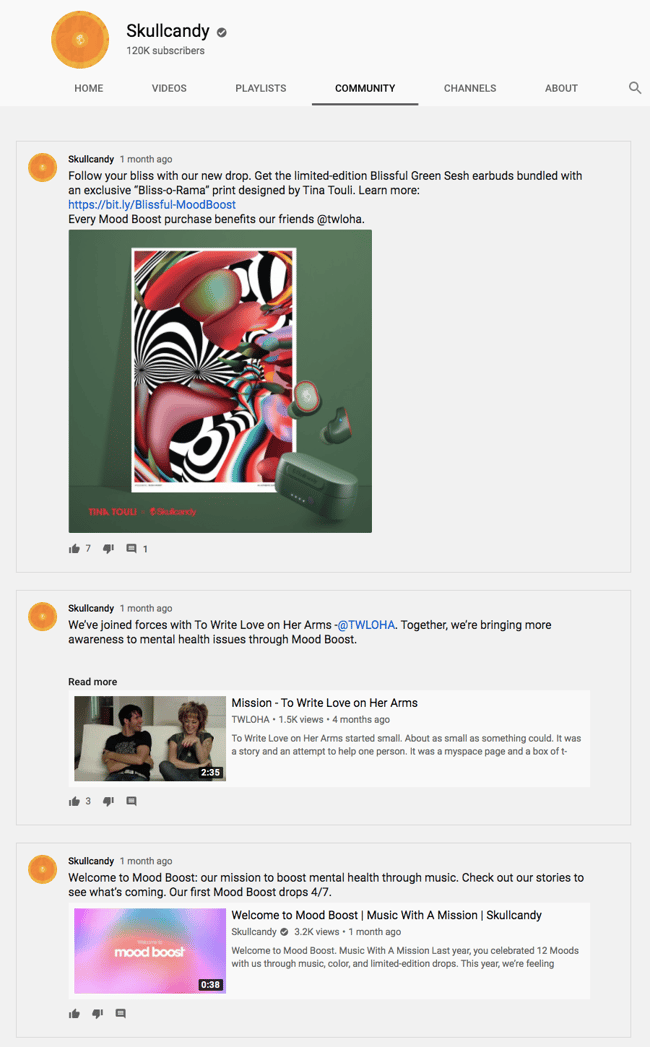
Brands can leverage the Community tab to post additional content such as:
- New video announcements or teasers
- General brand announcements, such as product launches
- Polls and other prompts for user-generated content
- Photos, such as a behind-the-scenes sneak peek of an upcoming video
The benefits here are two-fold. Not only are you keeping your channel active and the YouTube algorithm happy, but you’re contributing to the overall perception of your brand.
Brands Nailing It on YouTube
YouTube marketing is nothing new. There are many brands out there who are already creating content specifically for the platform, and to great success.
Let’s take a look at 4 brands who use YouTube in different, but effective ways.
GoPro
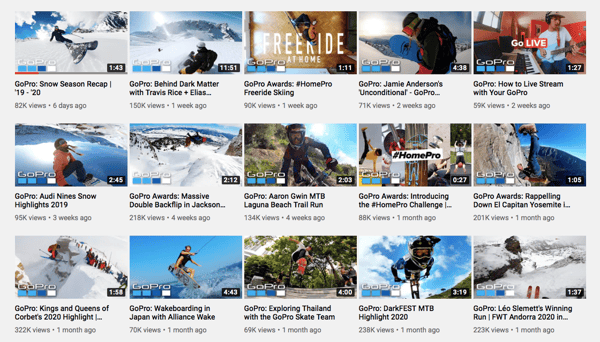
GoPro’s channel is a masterclass in knowing your audience; rather, we should say their family of channels, as the brand has sub-channels that cater to different, more specific audiences.
The beauty of GoPro’s YouTube strategy lies in the fact that all of its videos are user-generated or feature influencers that their fans would recognize — and they’re all created with the actual product being sold. It makes sense considering that GoPro’s entire raison d'etre is to share a bird’s-eye view of your adventures.
Of course, adventure is a core aspect of the brand’s personality, so you won’t find anything less than heart-stopping action in its videos. It’s the ultimate aspirational play, honing in on the target demographic’s interests and giving the feeling that by purchasing one of these cameras, you too can set out on an incredible journey.
Accenture
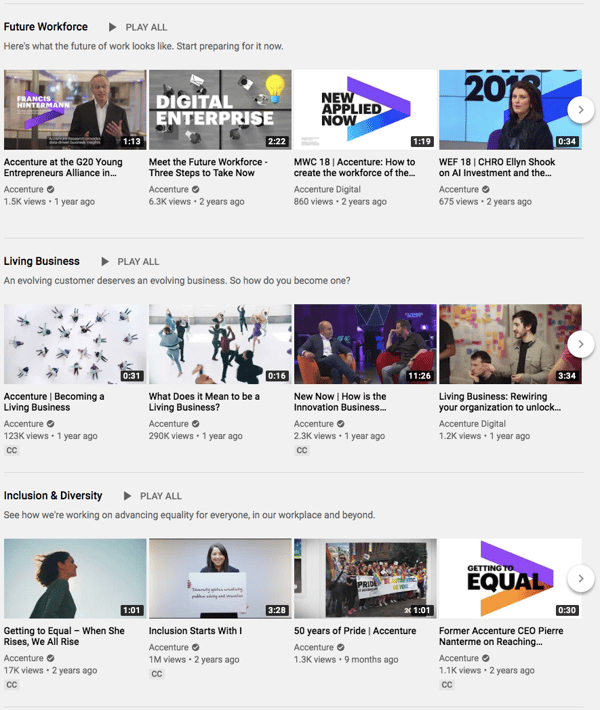
Accenture’s channel is the perfect example of how YouTube can work for B2B organizations. While this professional services company might not have flashy products to be promoted by trendy influencers, they have nevertheless leaned into some of the most important tenets of effective content marketing:
- Answering questions specific to your unique audience
- Putting a human face to your organization
Accenture’s videos run the gamut, covering topics as practical as “Back-Office Conversion for Asset Managers” and as personal as their company’s dedication to diversity and inclusion.
Most impressively, these videos are created and published with break-neck frequency. Their channel is updated several times a week, which makes it a treasure trove of information for anyone researching whether Accenture is the right fit for their professional needs (or even as a career move, as the channel also features strong employer branding).
On a visual level, most if not all of Accenture’s videos are well-produced, with many of their videos featuring impressive animation and consistent branding.
Bosch
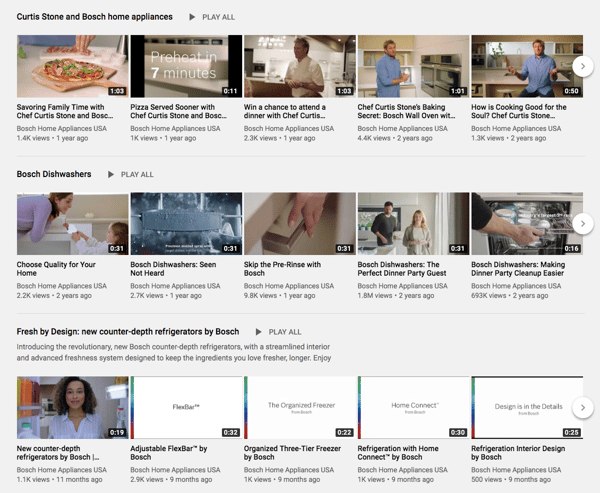
Home appliance manufacturer Bosch has successfully created a winning human-centric channel. It’s clear they’ve made a concerted effort to showcase the fact that their appliances don’t just serve a function, but also enhance the quality of people’s lives.
With such a wide range of upscale home appliances and accessories, Bosch has no trouble infusing the human benefits across their channel in a number of ways.
- How-to, tips, and FAQ-themed videos offering real-world user benefits
- Product testimonials from actual customers
- Influencers and brand ambassadors sharing their favorite brand solutions
It’s also worth noting that this channel has been around for 10 years, which means Bosch recognized the usefulness of YouTube in their marketing even in the early days of the platform.
Conclusion: Your Brand Belongs on YouTube
Consumers expect a lot more from brands than faceless sales pitches and heavy-handed advertising these days. Thus, YouTube has emerged as a platform uniquely suited for forging genuine connections and fostering brand loyalty in creative ways.
As people continue to turn to online video to educate themselves, be entertained, and inform their purchasing decisions, brands must determine how they can be most useful. Those who leverage YouTube with a strategic eye toward solving problems and engaging directly with people, will be the ones to remain top-of-mind in an otherwise unending sea of bland marketing and one-size-fits-all advertising.
We hope this ebook has helped shed some light on how you can get started on YouTube, and how it can tie into — and enhance — your overall digital marketing strategy.
If you have any questions about developing a YouTube strategy or producing great videos for your channel, please don’t hesitate to contact us!
.png?width=250&height=153&name=CSI-OverskiesRebrand_LOGO-01(smaller).png)

.png?width=100&height=61&name=CSI-OverskiesRebrand_LOGO-01(smaller).png)


.png?width=88&name=CSI-OverskiesRebrand_LOGO-01(smaller).png)

